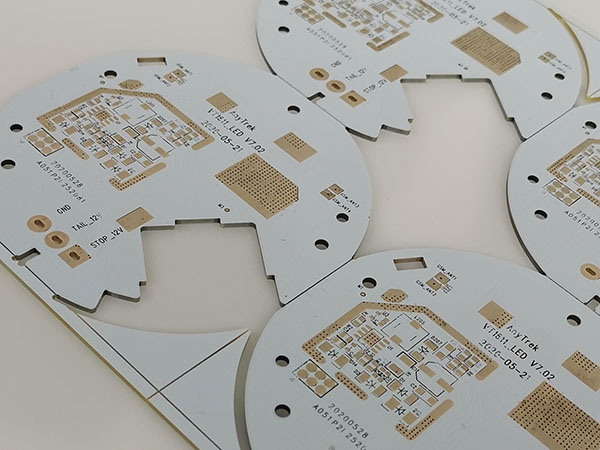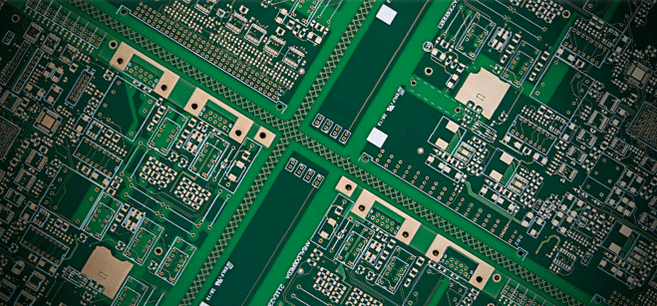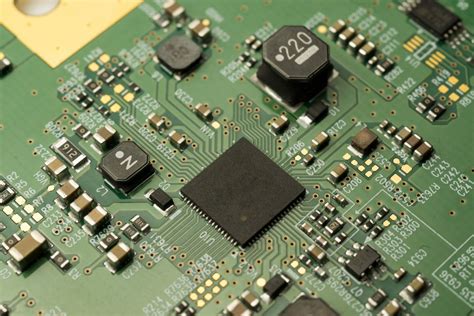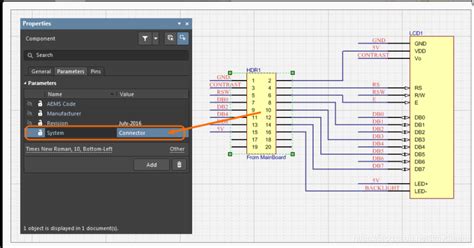CNC Machining for PCB Boards: Revolutionizing Prototyping and Production
Introduction
Printed Circuit Boards (PCBs) are the backbone of modern electronics, serving as the foundation for virtually every electronic device, from smartphones to industrial machinery. The demand for faster, more efficient, and cost-effective PCB manufacturing has led to the adoption of advanced technologies, one of which is Computer Numerical Control (CNC) machining. CNC machining for PCB boards has revolutionized the way PCBs are prototyped and produced, offering unparalleled precision, flexibility, and speed. This article explores the role of CNC machining in PCB manufacturing, its advantages, challenges, and future prospects.
1. Understanding CNC Machining in PCB Manufacturing
CNC machining is a subtractive manufacturing process that uses computer-controlled machines to remove material from a workpiece to create a desired shape or design. In the context of PCB manufacturing, CNC machines are used to mill, drill, and cut PCB substrates to create the intricate traces, pads, and holes required for electronic components to be mounted and interconnected.
The process begins with a digital design file, typically created using PCB design software such as Altium Designer, Eagle, or KiCad. This design file is then converted into a set of instructions (G-code) that the CNC machine can interpret. The CNC machine uses these instructions to precisely control the movement of its cutting tools, ensuring that the PCB is manufactured to exact specifications.
2. Advantages of CNC Machining for PCB Boards
2.1. High Precision and Accuracy
One of the most significant advantages of CNC machining for PCB boards is its ability to achieve extremely high levels of precision and accuracy. CNC machines can produce features with tolerances as tight as ±0.001 inches, ensuring that even the most complex and densely packed PCB designs can be accurately reproduced. This level of precision is particularly important for high-frequency and high-speed circuits, where even minor deviations can lead to signal integrity issues.
2.2. Rapid Prototyping
CNC machining is ideal for rapid prototyping, allowing engineers and designers to quickly produce functional PCB prototypes for testing and validation. Unlike traditional PCB fabrication methods, which can take days or even weeks to produce a prototype, CNC machining can produce a fully functional PCB in a matter of hours. This speed is crucial in today’s fast-paced electronics industry, where time-to-market is a critical factor.
2.3. Flexibility in Design
CNC machining offers unparalleled flexibility in PCB design. Unlike traditional etching processes, which are limited to two-dimensional designs, CNC machining can create three-dimensional features such as slots, cutouts, and complex board shapes. This flexibility allows designers to create more compact and innovative PCB designs, which can lead to smaller and more efficient electronic devices.
2.4. Material Versatility
CNC machining is not limited to traditional PCB materials like FR-4. It can also work with a wide range of other materials, including aluminum, copper, and even ceramics. This versatility allows for the production of specialized PCBs for applications such as high-power electronics, RF/microwave circuits, and harsh environment electronics.
2.5. Reduced Waste
CNC machining is a subtractive process, meaning that material is removed to create the final product. However, because the process is computer-controlled, it is highly efficient and generates minimal waste. Additionally, any waste material can often be recycled, further reducing the environmental impact of PCB manufacturing.

3. Challenges of CNC Machining for PCB Boards
3.1. Cost
While CNC machining offers many advantages, it can be more expensive than traditional PCB fabrication methods, particularly for large-scale production. The cost of CNC machines, cutting tools, and maintenance can be significant, and the process itself can be slower and more labor-intensive than methods like chemical etching or screen printing.
3.2. Limited Scalability
CNC machining is highly effective for prototyping and small-scale production, but it may not be the most cost-effective option for large-scale manufacturing. As the volume of PCBs increases, the cost per unit can become prohibitively high, making other methods like photolithography more attractive for mass production.
3.3. Tool Wear and Maintenance
CNC machining involves the use of cutting tools that can wear out over time, particularly when working with hard or abrasive materials like fiberglass or ceramics. This wear can lead to a decrease in precision and accuracy, requiring regular maintenance and tool replacement. Additionally, the cutting process can generate heat, which can affect the integrity of the PCB material if not properly managed.
3.4. Complexity in Handling Multilayer PCBs
While CNC machining is well-suited for single and double-layer PCBs, it can be more challenging to handle multilayer boards. Aligning and machining multiple layers with the required precision can be complex and time-consuming, and the risk of errors increases with the number of layers. This limitation makes CNC machining less suitable for advanced multilayer PCBs, which are increasingly common in modern electronics.
4. Applications of CNC Machining in PCB Manufacturing
4.1. Prototyping and Low-Volume Production
CNC machining is widely used for prototyping and low-volume production of PCBs. Its ability to quickly produce accurate and functional prototypes makes it an invaluable tool for engineers and designers who need to test and validate their designs before moving to mass production. Additionally, CNC machining is often used for custom or specialized PCBs that are produced in small quantities, such as those used in aerospace, defense, and medical applications.
4.2. RF and Microwave PCBs
CNC machining is particularly well-suited for the production of RF (radio frequency) and microwave PCBs, which require extremely precise trace widths and spacing to maintain signal integrity. The high precision and accuracy of CNC machining make it an ideal choice for these applications, where even minor deviations can lead to significant performance issues.
4.3. High-Power Electronics
CNC machining is also used in the production of PCBs for high-power electronics, such as power supplies, motor controllers, and inverters. These PCBs often require thick copper traces and specialized materials to handle high currents and temperatures. CNC machining can accurately mill and cut these materials, ensuring that the final product meets the required specifications.
4.4. Harsh Environment Electronics
PCBs used in harsh environments, such as those found in automotive, industrial, and military applications, often require specialized materials and designs to withstand extreme temperatures, vibrations, and exposure to chemicals. CNC machining can produce these specialized PCBs with the required precision and durability, making it a valuable tool for these industries.

5. Future Prospects of CNC Machining in PCB Manufacturing
5.1. Integration with Additive Manufacturing
One of the most exciting prospects for CNC machining in PCB manufacturing is its integration with additive manufacturing (3D printing) technologies. By combining the strengths of both subtractive and additive processes, manufacturers can create PCBs with even greater complexity and functionality. For example, 3D printing could be used to create the substrate and basic structure of the PCB, while CNC machining could be used to add precise traces and features.
5.2. Advances in Automation and AI
The future of CNC machining in PCB manufacturing is likely to be shaped by advances in automation and artificial intelligence (AI). Automated CNC machines equipped with AI algorithms could optimize the machining process in real-time, reducing waste, improving precision, and increasing production speed. Additionally, AI could be used to predict and prevent tool wear, further reducing downtime and maintenance costs.
5.3. Development of New Materials
As the electronics industry continues to evolve, new materials with unique properties are being developed for use in PCBs. CNC machining will need to adapt to these new materials, which may require new cutting tools, techniques, and processes. However, the flexibility and versatility of CNC machining make it well-positioned to handle these challenges, ensuring that it remains a valuable tool for PCB manufacturing in the future.
5.4. Increased Adoption in Emerging Markets
As the cost of CNC machines continues to decrease and their capabilities continue to improve, we can expect to see increased adoption of CNC machining in emerging markets. Countries with growing electronics industries, such as India, Brazil, and Vietnam, are likely to invest in CNC machining technology to support their local manufacturing needs. This increased adoption will drive further innovation and competition in the CNC machining industry, leading to even more advanced and cost-effective solutions for PCB manufacturing.
Conclusion
CNC machining has become an indispensable tool in the world of PCB manufacturing, offering unparalleled precision, flexibility, and speed. While it is not without its challenges, the advantages of CNC machining make it an ideal choice for prototyping, low-volume production, and specialized applications. As technology continues to advance, we can expect to see even greater integration of CNC machining with other manufacturing processes, as well as increased adoption in emerging markets. The future of PCB manufacturing is bright, and CNC machining will undoubtedly play a key role in shaping that future.







